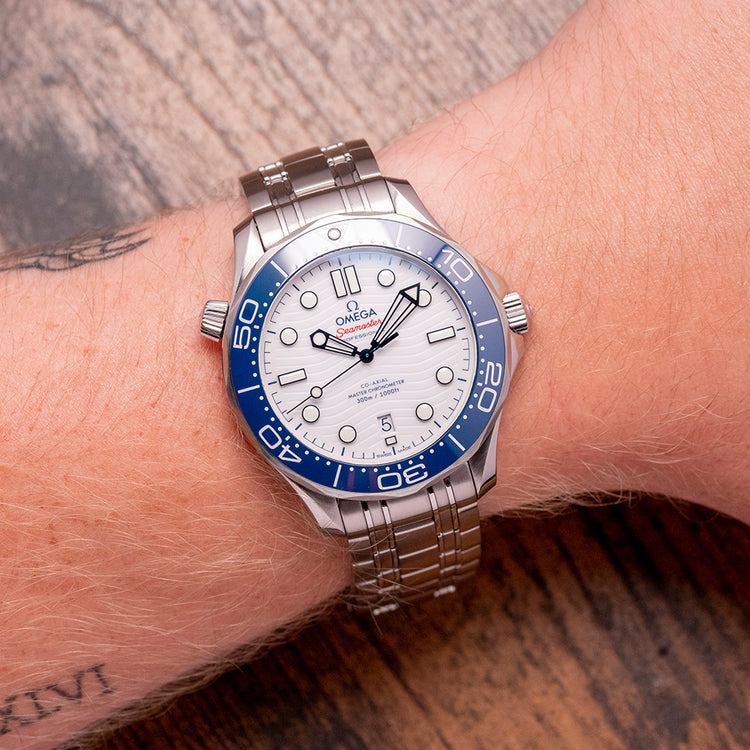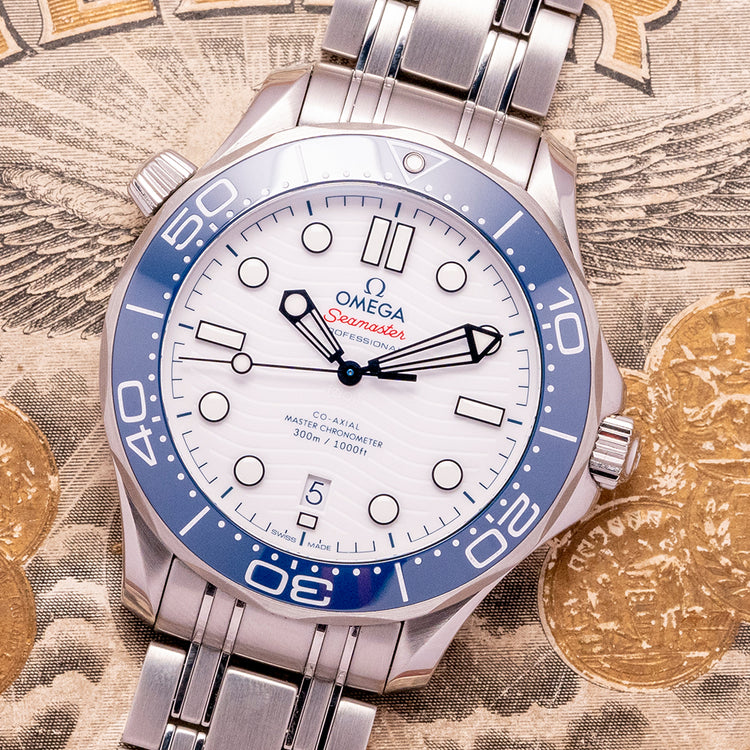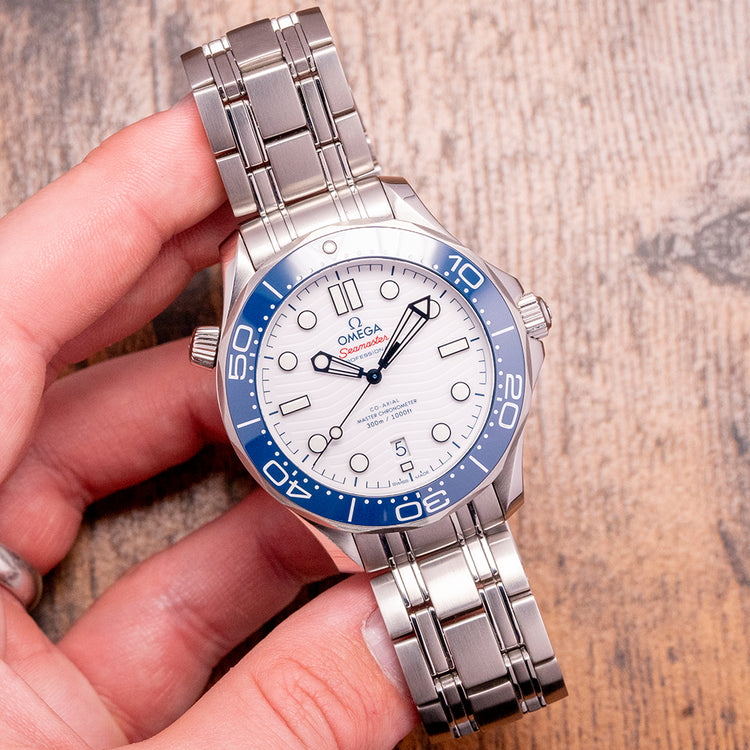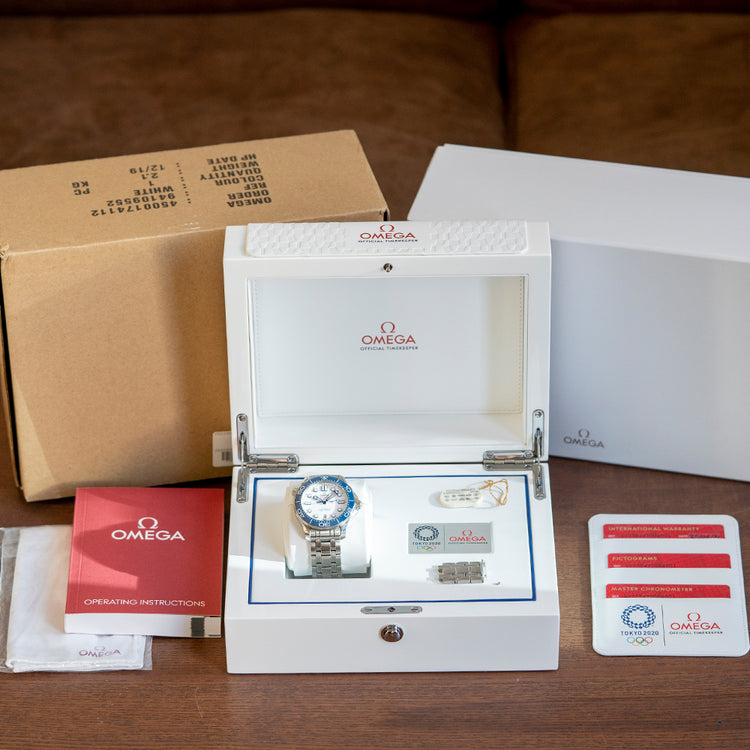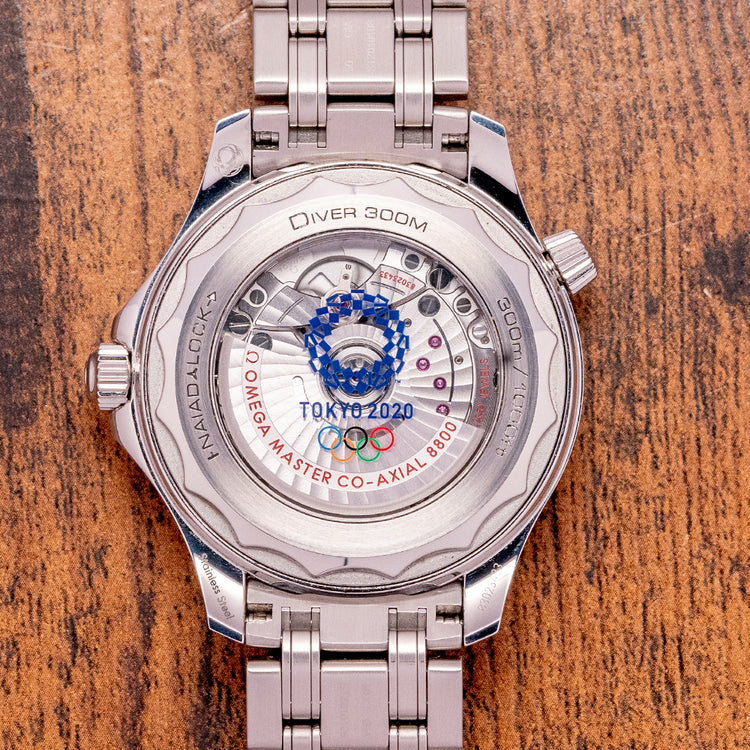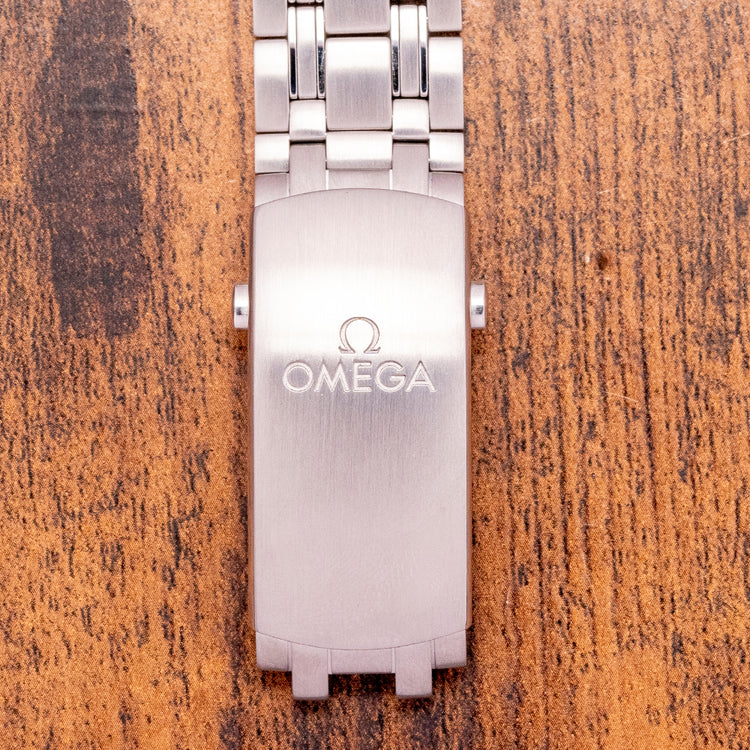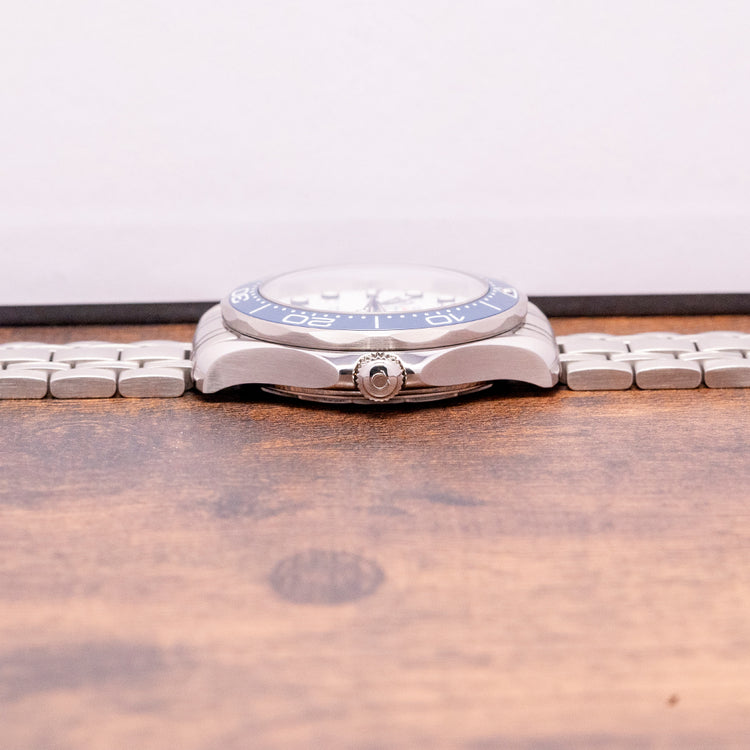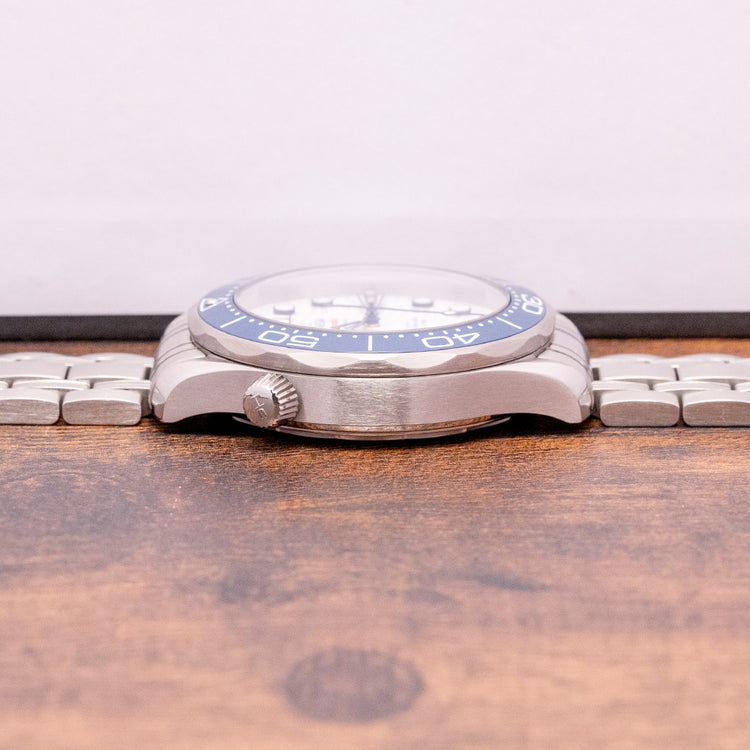More Information
Description
More
Less
Here we have a 2021 Omega Seamaster Tokyo 2020 Limited Edition 522.30.42.20.04.001 introduced to celebrate being the Official Timekeeper of the Olympic Games Tokyo 2020. The 42mm stainless steel case curves over your wrist with the twisted lugs associated with a modern Seamaster, and a lug-to-lug length of 50mm and a case thickness of 13.5mm give the watch an impressive wrist presence. On the right side, we have a protected screw-down crown; on the left side, at 10 o’clock, we have the Helium escape valve. The scalloped-edged unidirectional bezel has a ceramic blue insert with a white enamel dive scale. A domed sapphire crystal AR coated on both sides sits above a polished white ceramic dial with a laser-cut wave pattern, creating depth to the dial. An outer minute track in blue with applied disc and baton indexes coated in SuperLumiNova marks the hours. At 6 o’clock, a date window. Skeletonised sword hands with luminance tips are complemented by a sweeping lollipop centre second hand. The text is precisely printed in blue with a red “Seamaster”. On the reverse, a screw-down exhibition case back with the NAIAD Lock system, the system is patented, and the patent roughly states it's a locking system designed for a screw-down case back that allows the user to orient engravings in proper alignment without matching a given case back to a given case. “Naiad” is Greek for mythical water spirits. Inside an automatic Omega Co-Axial 8800, 35 jewels, 25,200 beats per hour, a Certified Master Chronometer, approved by METAS,” Swiss National Metrology Institute”. The watch goes through COSC certification before being selected for the eight tests run by METAS. This movement is resistant to magnetic fields. It has a silicon balance spring that winds in both directions. Finished in Rhodium plating and decorated with Geneva waves. The watch comes fitted on its 20mm Omega brushed and polished stainless steel bracelet with its signed folding push-button release clasp; all links are provided, and the watch comes with its Omega presentation box, swing tag and papers.
Points of Mention
More
Less
Personal Note
More
Less
Specification
More
Less
Movement : Automatic Omega Cal. 8800
Age : June 2021
Year : 2021
Case Size : 42mm
Case Thickness : 13.5mm
Lug to Lug : 50mm
Lugs : 20mm
Condition : Pre-Owned
Box and Papers : Box & Papers
Case Material : Stainless Steel
Warranty : 12-Months Warranty
The wrist model's wrist size is 7inch
About Omega
More
Less
Description
Here we have a 2021 Omega Seamaster Tokyo 2020 Limited Edition 522.30.42.20.04.001 introduced to celebrate being the Official Timekeeper of the Olympic Games Tokyo 2020. The 42mm stainless steel case curves over your wrist with the twisted lugs associated with a modern Seamaster, and a lug-to-lug length of 50mm and a case thickness of 13.5mm give the watch an impressive wrist presence. On the right side, we have a protected screw-down crown; on the left side, at 10 o’clock, we have the Helium escape valve. The scalloped-edged unidirectional bezel has a ceramic blue insert with a white enamel dive scale. A domed sapphire crystal AR coated on both sides sits above a polished white ceramic dial with a laser-cut wave pattern, creating depth to the dial. An outer minute track in blue with applied disc and baton indexes coated in SuperLumiNova marks the hours. At 6 o’clock, a date window. Skeletonised sword hands with luminance tips are complemented by a sweeping lollipop centre second hand. The text is precisely printed in blue with a red “Seamaster”. On the reverse, a screw-down exhibition case back with the NAIAD Lock system, the system is patented, and the patent roughly states it's a locking system designed for a screw-down case back that allows the user to orient engravings in proper alignment without matching a given case back to a given case. “Naiad” is Greek for mythical water spirits. Inside an automatic Omega Co-Axial 8800, 35 jewels, 25,200 beats per hour, a Certified Master Chronometer, approved by METAS,” Swiss National Metrology Institute”. The watch goes through COSC certification before being selected for the eight tests run by METAS. This movement is resistant to magnetic fields. It has a silicon balance spring that winds in both directions. Finished in Rhodium plating and decorated with Geneva waves. The watch comes fitted on its 20mm Omega brushed and polished stainless steel bracelet with its signed folding push-button release clasp; all links are provided, and the watch comes with its Omega presentation box, swing tag and papers.
Points of Mention
Personal Note
Specification
The Brand
Enquire or Book an Appointment
Would you like to discover further details about this watch, or perhaps arrange an appointment to view and try it on? Complete this form and a member of our team will get back to you shortly.
You May Also Like





















